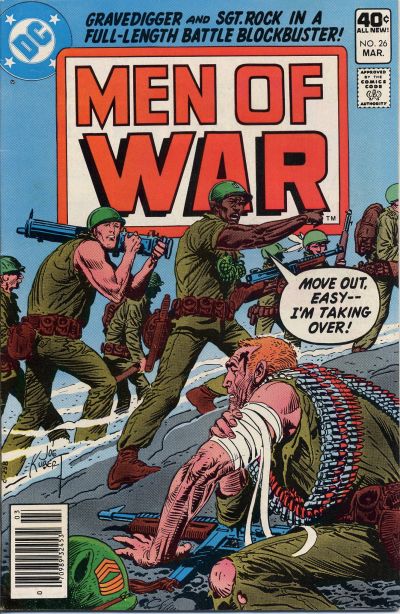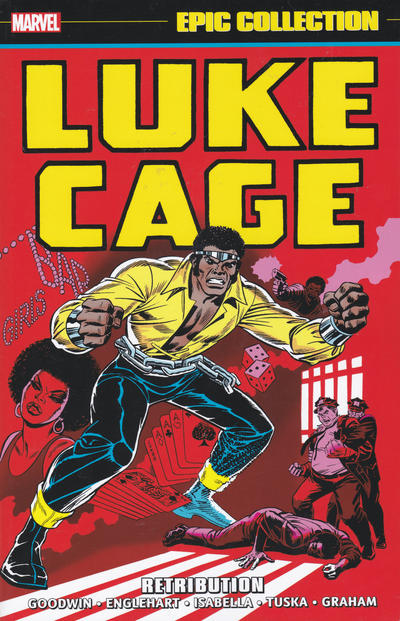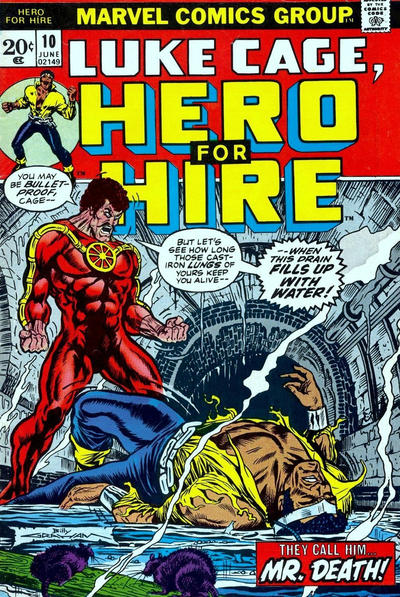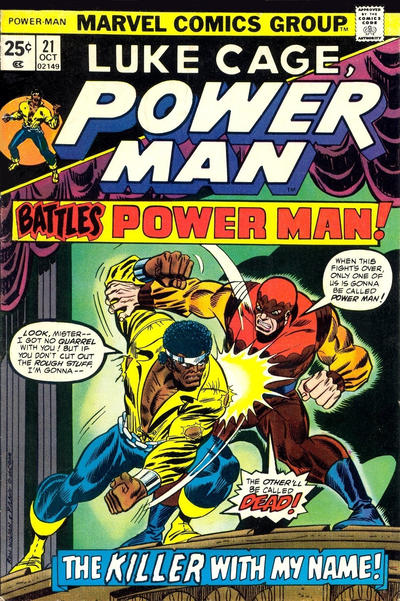Men of War was the last of the classic DC war comics to arrive onto the comic racks. Like its kin it was an anthology which featured several characters during its run. Enemy Ace was a steady back up feature but I'll be turning my sights on him next month. Jerry Grandenetti turned in some outstanding artwork on features like Dateline: Frontline and Rosa. But the star of the show was Ulysses Hazard who was better known as Codename: Gravedigger. He got his sobering nickname in just the manner you'd expect -- he was a gravedigger who did service for the many men who fell in the line of duty. But he had that distinction because he was a black man in an army that was segregated and was redolent with the racism that brewed in the homeland.
Codename: Gravedigger was the creation of David Michelinie and artist Ed Davis along with Romeo Tanghal who inked all the stories of Gravedigger in the series. Michelinie's story relates the saga of a young black man who as a boy was overcome by polio but works with a demon fury to build up his weakened body and eventually becomes a veritable powerhouse with a range of fighting skills.
Despite these accomplishments he is relegated to support work and not given the chance to fight for his country as he'd prefer. His solution in the face of racism was to storm the Pentagon and so prove his mettle to the Undersecretary of War. He challenged the leadership to put him in the fight and so they sent him on a series of impossible missions.
He fights in Europe against the Nazis, invades concentration camps, defends the American coastline from invasion, and rescues more than a few orphans during the war. His stories run the gamut of what one expects of a Bronze Age war comic.
After a single issue by Arvell Jones the penciling job is given over to Dick Ayers. Eventually the scripting goes to Roger McKenzie. The stories they dream up for Gravedigger are high octane adventures in which he seems never to stop moving,
To me at least, this seemed somewhat counter to the DC formula which seemed to focus on the time in between the fighting as much if not more than the physical combat. Perhaps it's the presence of Dick Ayers, the main man on Marvel's war comics, but this feature feels more like a Marvel book than a DC one.
Gravedigger has that same imperviousness which Sgt. Fury and others at Marvel seem to possess as they wage the war against the enemy, and he has a tendency to mouth off quite a bit as he fights.
The Joe Kubert covers are the most DC thing about this book aside from the back up features.
Gravedigger fights alone for the most part, doing his best to salvage missions that seem impossible from the get-go. That he's a suicide warrior seems not to dawn on him. He just wants his chance to fight.
His missions even come to the attention of Joseph Goebbels himself, the Nazi minister of propogranda, who goes on to become something of a main villain for Gravedigger. The fact a black man is so successful against the Nazis rubs Goebbels the wrong way indeed.
Michilinie had begun a subplot which McKenzie continued about a wounded British officer who is recovering though he cannot walk. He is given the mission eventually of becoming Gravedigger's commanding officer though that is murky for some time.
At some point he is replaced by a Nazi lookalike and Gravedigger not only has to unmask the villain but is charged with finding the disappeared officer named Burke. That trek leads Gravedigger into the depths of the German homeland where he must confront the horror of the camps.
Jack C. Harris takes over the helm of the series alongside Ayers and Tanghal. If anything, the series become even more action-oriented.
Gravedigger is joined in his fight by a trio of British soldiers who make the mag feel even more like Sgt. Fury. One of the three Brits wears a derby and another has beret, evoking Dum Dum Dugan and Percy Pinkerton.
This little squad hangs out with Gravedigger for several issues off and on, though one never really gets the feeling their addition constitutes a permanent change.
Gravedigger is ordered on a deadly mission in North Africa, and again his missions seem to suicide runs at best.
This latest one though brings a permanent change to Gravedigger's face when he is wounded with a crooked scar across his face which resembles a cross, though he calls it a tombstone. Clearly there's a feeling Gravedigger needs a visual boost, though this change is rarely showcased on the covers.
In North Africa Gravedigger is chasing some important documents, and this particular maguffin drives the plot for several issues.
The stories while filled with action seem less and less signficant. Ulysses Hazard is more and more a cypher who fights for the sake of the fight. He bickers a bit now and again but follows through most often.
One notable mission brings him into partnership with Mademoiselle Marie, a longtime DC war favorite.
Truth told some of Gravedigger's missions don't really make all that much sense but as long as he's got Nazis to fight, the comic rumbles along.
Toward the end of the run he's led to believe his Mother is dying and he's sent back to the states. This is a ruse for a bizarre Nazi plot to smuggle in doubles for loyal Americans keeping watch on the beaches for enemy incusions. Turns out his Mom is fine but Gravedigger has some fighting to do yet.
After he single-handedly forestalls the Nazi invasion on the beaches of Atlantic City he heads back to the European front.
One story even has Gravedigger live up to his nickname, but others end up six feet under and not Ulysses Hazard.
One of the strangest two-parters yet has Gravedigger assigned to protect FDR. It's a wild and wacky misadventure of a war story and doesn't really have any sense of the essential realism to make a DC war story stick. It felt more like a chapter of All-Star Squadron.
Under a George Evans cover Gravedigger completes that mission eventually with the world leaders safe and sound as we knew they would be all along.
The series wraps up with Gravedigger taking command of Easy Company when Sgt.Rock is wounded. We get a nifty story which showcases each of the Joes of Easy as they try to take something called "Nickname Hill". Even with Easy backing him up it's clear that Gravedigger is a one-man act. The series is not nor is it especially good. Dick Ayers turns in unremarkable artwork that is inked with indifference by Tanghal -- they don't appear to be a good fit to my eye. The stories have too much of that zany feel one gets with Marvel war stories and that jars inside the illustrious DC war canon.
Beginning tomorrow the Dojo takes a most sobering look at World War II and the Holocaust.
Rip Off




























































